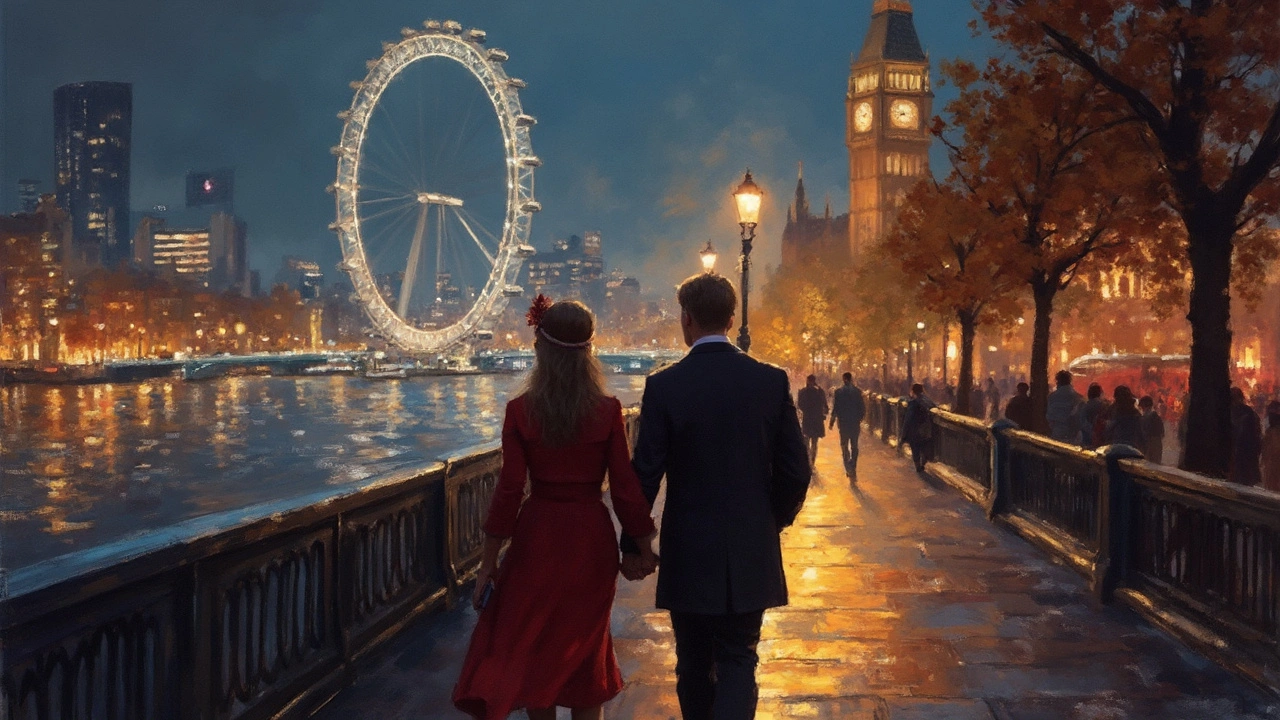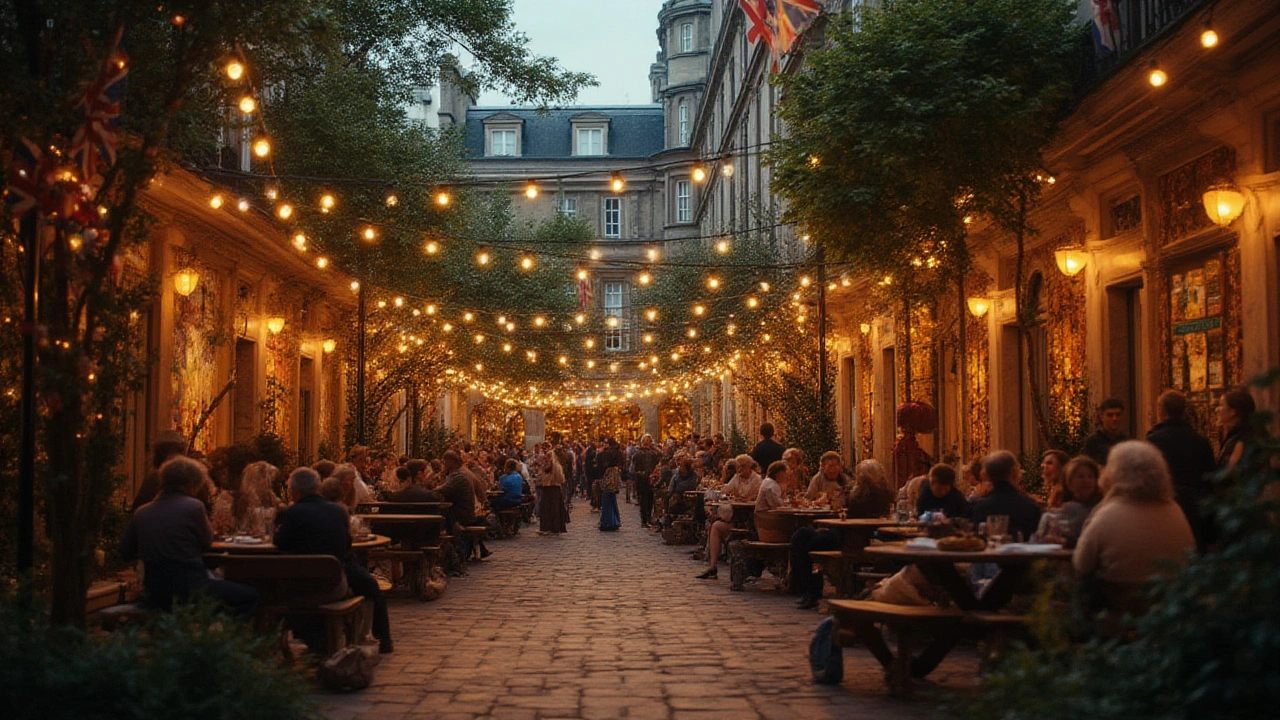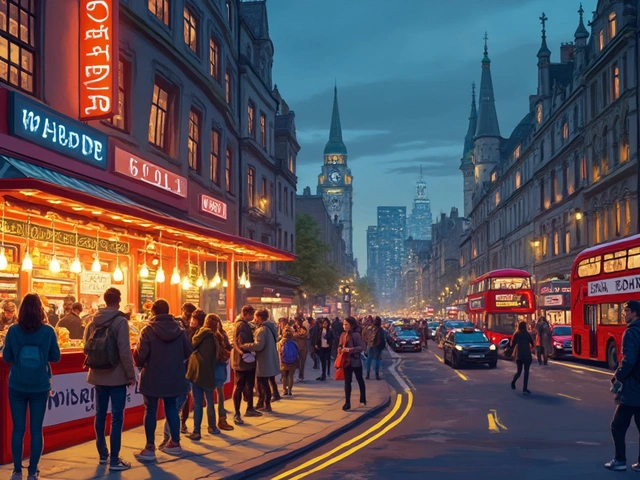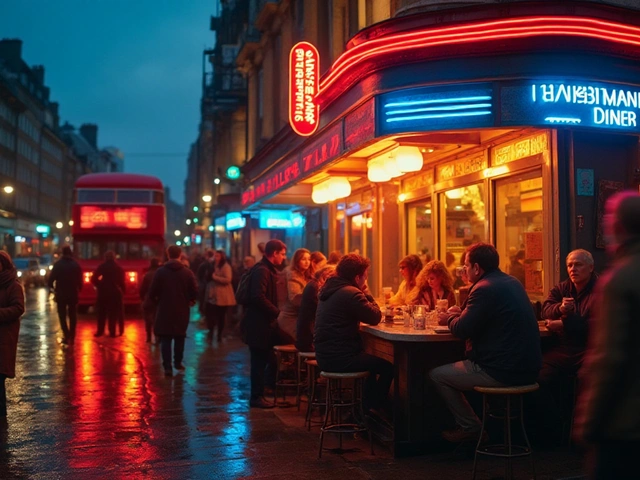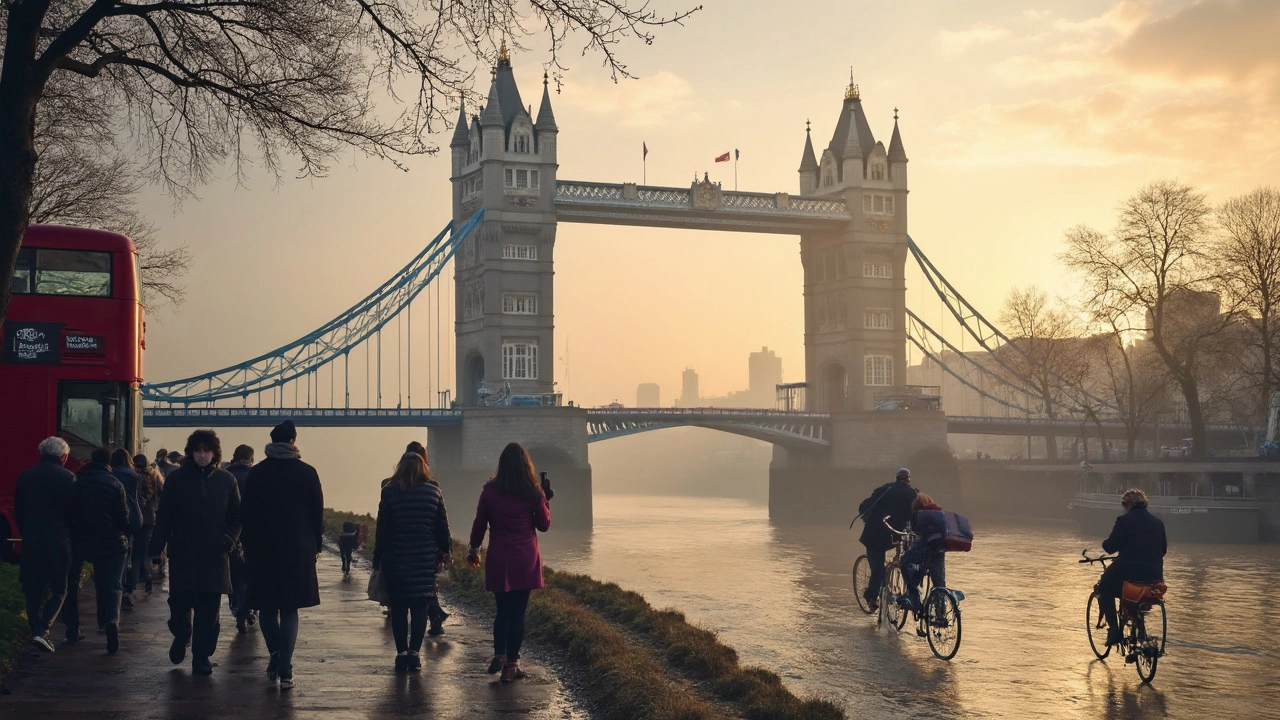
Walk along the Thames in London and you can’t miss Tower Bridge. It's not just another crossing—it’s the beating heart of the city’s skyline, snapping open for tall ships and showing off its bold towers to anyone strolling by. For anyone living in London or popping over for a visit, this bridge is more than a photo backdrop; it’s part of your day-to-day wanderings or a shortcut to Borough Market for breakfast.
Lots of people confuse it with London Bridge (that less flashy neighbour west up the river), but Tower Bridge is the one with all the drama—raised walkways, blue steel, and a history of daring stunts and royal processions. Whether you’re a lifelong Londoner, a freshly arrived expat, or just in town for a business meeting nearby, taking a walk here connects you with all sorts of local stories. If you time it right, you might catch the bascules raising for a passing boat. Trust me, it never gets old, even if you've lived here for years.
- A London Icon: Why Tower Bridge Stands Out
- Engineering Magic: How the Bridge Was Built
- Secrets Above and Below: Going Inside Tower Bridge
- Best Times and Ways to Walk the Bridge
- Around the Bridge: Food, Pubs, and Hidden Gems
- Local Tips: Making the Most of Your Visit
A London Icon: Why Tower Bridge Stands Out
If you ask anyone to picture a bridge in London, chances are they see Tower Bridge first. It's not just a crossing, it's the face of the city, popping up everywhere—film backdrops, New Year's fireworks, even the logos for everything from London tourism to souvenir shops. Why is it such a big deal?
The main reason is its looks. Tower Bridge opened in 1894, smashing the idea that a busy, modern bridge had to be boring. With its two chunky stone towers and the bright blue steel walkways, you really can’t mix it up with any other bridge. Those giant moveable roadways (they’re called bascules, if you want to sound clever) were a massive deal in Victorian times, and they're still working today.
London just wouldn’t feel the same without Tower Bridge’s shapes on the skyline. The bridge sits right between two of the city’s biggest historic spots—the Tower of London and the Shard peering over the other way. Tourists always flock here, but loads of locals walk and cycle across it every day. When the bridge lifts, the whole area stops and stares, whether it’s a Thames Barge or a posh event cruise floating through.
Here are some numbers to show its standing in London:
| Fact | Detail |
|---|---|
| Opened | 30 June 1894 |
| Average Lifts Per Year | ~800 |
| Daily Pedestrian Crossings | Over 40,000 |
| Height (Towers) | 65 metres |
| Length | 244 metres |
Not many London buildings pull double duty as both a real part of working life and a place everyone wants to visit. Tower Bridge mixes both—your walk to work might get a bit longer if a tall ship's coming, but the snap you take with your phone just doesn’t get more London than this.
Engineering Magic: How the Bridge Was Built
Right, so you’ve seen Tower Bridge stretch across the Thames. But how did that mix of stone, steel, and those postcard-perfect towers actually come together? It kicked off back in 1886. London’s East End was booming, and there was no way for people and carts to cross the river without holding up the busy port traffic below. That’s what pushed the city to approve something totally different—a bridge that could lift up for ships yet still let folks cross on foot or by carriage.
Sir John Wolfe Barry and Sir Horace Jones nailed the design. They didn’t just slap steel beams together—they built massive piers right into the riverbed. The towers look old-school because they’re wrapped in Cornish granite and Portland stone, but underneath it’s solid steel, and that’s what makes it stand out among other London bridges.
Here’s some fun data from the late 1800s:
| Fact | Number |
|---|---|
| Years to build | 8 years (1886–1894) |
| Construction workers | 432 at peak |
| Steel used | 11,000 tons |
| Total cost | £1.2 million (about £150 million today) |
The really clever part? They added huge moveable roadways—called bascules. For ages, these were powered by steam engines and massive counterweights. It took just a minute to push up the road and clear the way for the ships loaded with goods from all over the empire.
Today, the original steam system gets a lot of love from history buffs. The modern lifting machinery is electric and hydraulic, making it way more reliable (not to mention less smoky). You can still see bits of the old steam gear if you swing by the Engine Rooms, which are open to anyone with a ticket.
Building Tower Bridge wasn’t just about clever design. The workers braved rotten conditions—think mud, tides, and freezing cold. But the result is a landmark that runs like clockwork, even with today’s traffic, literally stopping cars and bikes several times a week so river boats can glide through. So next time you walk or bike across, remember: it’s a masterpiece as much as it is a shortcut.
Secrets Above and Below: Going Inside Tower Bridge
If you only ever walk across Tower Bridge, you’re missing a whole layer of what makes it special. Head inside and suddenly you’re in a different world—steel beams, echoing walkways, and a view that’s better than anything you’ll get from the pavement. Start in the north tower, where you’ll find the entrance to the Tower Bridge Exhibition. They’ve got it down to a science: lifts for accessibility, and tickets aren’t much pricier than a good London lunch. You can buy on the spot or ahead on their website (Londoners get a discount with proof of address, by the way).
The biggest wow-factor is the high-level glass floor walkways, 42 metres above the Thames. It’s wild to watch red London buses and the odd brave cyclist zooming by under your feet. Sometimes you’ll see the river boats gliding along too. For most, it’s a top photo spot—midweek mornings are quieter if you want to dodge crowds and selfie sticks.
Up above, displays cover the bridge’s wild history—Victorian engineers, wartime stories, and famous bridge-jumping stunts. But don’t just breeze through. The windows give you top-notch views west to the Shard and east towards Canary Wharf, so stop and take them in. There’s even a hidden “Great Bridges of the World” exhibit, with models and facts about iconic crossings, often skipped by folks in a rush.
Don’t forget the best bit is actually found below, in the old Engine Rooms on the south bank. This is where you get your head around how the bridge used to rise up the old-fashioned way: huge steam engines, dials, and the smell of oil and machinery. You’ll walk past actual boilers and pistons that once powered the bridge lifts. It’s all included in the entry price. For families, there are interactive displays and even a ‘design your own bridge’ screen to try before heading out again.
Want a quirky twist? Book onto the Behind-the-Scenes tours—they run on select days, letting you access off-limits areas with guides who know all the weird trivia (like when it’s used for movies, or how they clean the glass walkways after storms). This bit’s a real hit with locals who think they know Tower Bridge already.
If you’re coming in from the City side, check out St. Katharine Docks for a post-visit coffee. From the Southwark side, you’re walking distance to Bermondsey’s food scene—no need to rush off once you’ve explored the London landmark from the inside out.
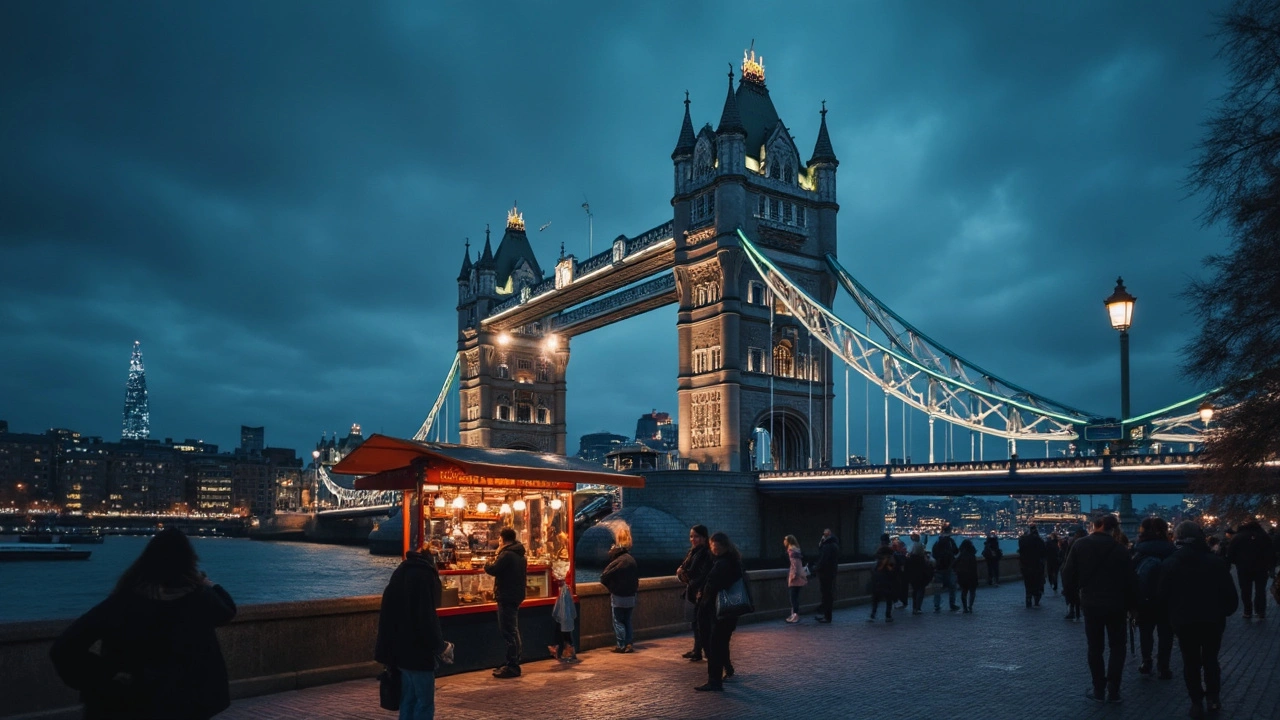
Best Times and Ways to Walk the Bridge
If you want that classic Tower Bridge stroll—without the endless selfies in your way—timing matters. Locals know weekday mornings (especially before 9am) are your best bet for a crowd-free walk. That’s when office commuters breeze by and the tour groups haven’t rolled up yet. Summer afternoons, especially during the school holidays, can get packed. If you want more breathing space, go on a rainy day. London weather clears out the crowds faster than any event.
For a real treat, try walking at sunset. The city lights come on, the Thames sparkles, and you can snag brilliant snaps with the Shard or the Tower of London in the background. Photographers swear by the golden hour—just after sunrise or before sunset. If you want to see the bridge in action, check the official lift schedule on the Tower Bridge website. Lifts usually happen around 800 times a year, but times shift based on river traffic. It’s free to watch; just turn up at the right spot and wait for the gates to close and the bascules to rise.
| Day/Time | Crowd Level | What to Expect |
|---|---|---|
| Weekday mornings (before 9am) | Low | Quieter, mostly Londoners |
| Weekday late afternoons | Medium | Some tourists, after-school rush |
| Weekends & holidays | High | Busy, packed with visitors |
| Rainy days | Low | Fewer people, moody photos |
| Golden hour (sunrise/sunset) | Medium | Best for photos, locals and tourists mix |
Walking across Tower Bridge is always free. If you’re looking for a bit more, grab a ticket for the Tower Bridge Exhibition, which lets you walk above the river on the glass-floored walkway. The entrance is on the north tower, right by the London sign and close to Tower Hill tube station. If you have little ones or fancy something different, take the riverside path on the south bank. You’ll get killer views of St Katharine Docks and Butler’s Wharf—plus some bench spots for coffee from local cafes like WatchHouse or Black Sheep Coffee.
- Wheelchair access: Both ends of the bridge, lifts to the exhibition
- Bikes: Okay to push (not ride) across the footpath
- Guided walks: Check City of London guides—they often do evening tours
If you plan to cross with prams or kids, avoid the tight rush hour slot around 5:30-6:30pm. At those times, the paths get crammed, especially on the eastern walkways leading into Shad Thames. All in all, plan a bit ahead and you’ll dodge the crowds and enjoy the bridge like a local.
Around the Bridge: Food, Pubs, and Hidden Gems
After you’ve had your fill of London views from Tower Bridge, it’s tough not to be drawn by the smells and buzz from nearby spots. For quick bites, Borough Market is about a 10-minute walk west—come hungry. The sausage rolls at Ginger Pig, Monmouth Coffee for your caffeine fix, and Bread Ahead’s famous doughnuts truly live up to the hype. If you’re early, weekday mornings are less chaotic than Saturdays.
Right at the bridge’s footsteps, Butler’s Wharf does a great job blending riverside scenery with good food. Coppa Club is popular for its quirky igloos—book those ahead, especially around winter or summer weekends. Fancy fish and chips with a local twist? Head to Poppies, which serves flaky cod in retro surroundings locals actually use, not just tourists.
For pub lovers, The Anchor on Bankside isn’t far, and The Dickens Inn on St Katharine Docks pulls a steady crowd (even if the prices remind you you’re in central London). Lower Deck at St. Katharine Docks is quieter if you want a pint by the water without elbowing through crowds. It’s worth checking local events too: summer brings outdoor movie nights and food stalls along the riverside.
Hidden gems? Most people miss the views from Potters Fields Park, just by the bridge—it’s ideal for a picnic, people-watching, or a breather after too much market food. If you want something a little different, look for TeamSport Go Karting London in Bermondsey or visit the quirky exhibitions at the Fashion and Textile Museum just off Bermondsey Street. Both are a short walk away but easily missed if you stick to the tourist trail.
So, whether you’re after lunch, a pint, or just a new angle on Tower Bridge, this area packs plenty into a few city blocks. No need to wander far for something truly tasty or unique.
Local Tips: Making the Most of Your Visit
If you want to avoid the crowds, skip midday—early mornings (especially on weekdays) make for the calmest walks and the best Thames views. The weekend rush usually starts by 10am, so if you can, aim for before then. Sunset paints the bridge in golden light and makes for amazing photos, especially from the Butler’s Wharf side or the north bank near St Katharine Docks.
- London locals know walking the high-level walkways is worth the ticket. Not only do you get a cool glass floor view of buses and taxis gliding underneath, but you also catch classic city sights—Shard to the west, Canary Wharf to the east.
- Grab tickets online through the official Tower Bridge site. It’s cheaper and you don’t queue as long. As of June 2025, adult entry is £12.30, kids £6.20, and under 5s are free. Borough of Southwark or Tower Hamlets residents can get free entry with proof of address, so bring your council letter or a bank statement.
- Watch for bridge lifts, which happen about 800 times a year. Schedules are posted monthly, but you can check the next lifts on the Tower Bridge website. Seeing the bascules rise is something you don’t want to miss, especially if you’ve got friends visiting from abroad.
- For the best snap, stand on the north bank near the Tower of London or by Potters Fields Park. If you’re after something quirky, try Le Pont de la Tour rooftop or the riverside tables at The Anchor Tap pub—both classic local hangouts.
- Coming by tube? Tower Hill on the District and Circle lines puts you closest to the North Tower, while London Bridge station gets you to the South Tower and Borough Market in under ten minutes on foot.
Here’s a quick cheat sheet if you like planning:
| Getting There | Ticket Tips | Best Views | Food Nearby | Special Events |
|---|---|---|---|---|
| Tower Hill Tube / London Bridge Station | Online booking is cheaper; Council residents free | Potters Fields Park, St Katharine Docks, High-level walkway | Borough Market (street food), The Vault (classic fish & chips) | Check website for bridge lift times and photo tours |
A bonus hack: if you’re cycling, use the riverside paths, but walk your bike across the bridge—cyclists are asked to dismount. Dogs are allowed on leads too, so no reason to leave your furry mate at home. Don’t rush. Let yourself wander, grab a coffee from WatchHouse or White Mulberries by the docks, and soak it all up like a proper Londoner.


